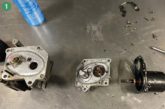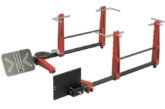
PMM hears from Andrew Goddard, Chairman of the Verification of Lubricant Specifications (VLS), on the recent update to the ACEA 2016 sequences and its impact on the lubricants sector.
This summer, the European Automobile Manufacturers Association (ACEA) issued an update to its 2016 engine oil sequences. The updates affect service-fill oils for petrol engines, light-duty diesel engines, petrol and diesel engines with after-treatment devices and heavy-duty diesel engines.
The ACEA sequences identify relevant performance standards for lubricants specifically tailored to the European market. The current series that lubricant marketers are blending to were produced in 2016. The sequences are based on the type of engine, usually the ‘A’ series of petroleum engines and the ‘B’ series for diesel engines, including light vans, and are designed for vehicles that do not have exhaust after-treatment devices.
For vehicles that are fitted with either a catalytic converter or diesel particulate filter, the ‘C’ sequences apply, where ‘C’ represents catalyst compatible engine oils.
So, a typical series of sequences might be ACEA A3/B4 or ACEA C3. The exact combination of letters will depend on the engine’s specific requirements and for heavy commercial diesel engines then the ACEA ‘E’ series will apply. This latest update or third revision to the current sequences makes a few specific changes.
What’s changed?
Firstly, the sequences allowed for the introduction of the new CEC L-107-19 test and limits (A/B and C categories) replaces the Daimler M271 engine test and limits.
This change has been made as engines that supported previous sequences are reaching the end of their useful life. The Daimler M271 engine test first appeared in the 2000s and was finally withdrawn in 2015. ACEA has decided that it doesn’t make sense to have a new engine oil tested through a 20-year-old engine, which isn’t currently available and might not meet the latest emission regulations.
Secondly, the sequences allowed for an update to the ASTM D892 method, which is used to quantify the foaming tendency of engine oil in respect to the applicability of test Option A with or without the Option A sample pre-test procedure, is permitted. This is a technical change to ensure comparability in engine tests performed on the lubricant during testing.
The other key point arising from the ACEA 2016 update relates to registration. In the ACEA European Oil Sequences 2016 (including this update), ACEA announced that it “…will introduce a mandatory registration scheme within 2017 and will inform stakeholders about the procedures to be followed for mandatory registration three months in advance of the date of mandatory registration”.
The scheme has yet to be introduced, and ACEA now aims to require the mandatory registration scheme in parallel with the next release of the ACEA oil sequences. They say they intend to publish these new sequences towards the end of 2020.
At present, there is already a registration system overseen by ATIEL, against which lubricant marketers make self-certifying claims against the ACEA sequences. The question is why ACEA would want a separate registration system and for what purpose, and where this leaves the current ATIEL system?
How does this affect garages?
Lubricants manufacturers will be looking closely to see when the 2020 sequences are announced and what the changes will be. Manufacturers usually have two years to update specifications and packaging to ensure that they are only making claims against current sequences, providing clarity for end users.
Day to day, these changes to the 2016 sequences will have limited impact on workshops and garages. But they do demonstrate that in Europe, vehicle manufacturers are doing what they can to keep lubricant specifications up to date and fit for purpose. Modern engine oils are highly sophisticated lubricants, formulated not just to keep engine parts moving smoothly, but to contribute to improved fuel economy as well as helping reduce emissions.
As ever, choosing the right lubricant for each vehicle is vital. Always refer to the vehicle owner manual to comply with manufacturer guidelines on the correct lubricant to use and how often to change it. Consult directly with the manufacturer or use an online database registration lookup tool available on the homepage of most leading lubricant companies, if you are in any doubt. Using the most suitable, high-quality lubricant is the best approach to ensure that your customers’ vehicles are sufficiently protected throughout their lifetime.
At VLS, we investigate complaints against lubricant products to ensure that, in this increasingly complex market, products really can deliver what they claim. Trade users must be able to have confidence that products on sale are fit for purpose.









